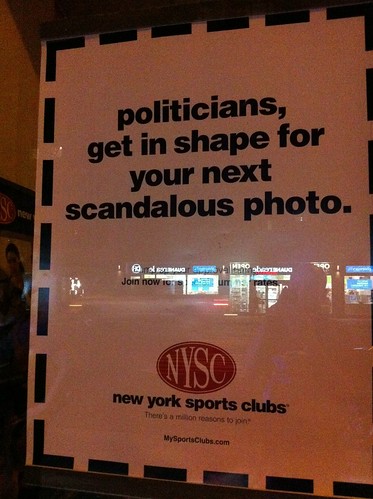 How do teens feel about the subject of “sexting” (electronically sending a nude or partially nude picture of yourself)? Here are some quotes from a New York Times interview earlier this year:
How do teens feel about the subject of “sexting” (electronically sending a nude or partially nude picture of yourself)? Here are some quotes from a New York Times interview earlier this year:
“We see virtual images all day long, so if someone sends you an image, it loses the identity of the person. It’s just a picture.” – Zoe, 18
“There’s a positive side to sexting. You can’t get pregnant from it, and you can’t transmit S.T.D.s. It’s a kind of safe sex.” – Kathy, 17
“It’s a way to express your feelings. If a guy and a girl are in love, instead of saying it face to face, they can say it through technology.” – Saif, 18
“People don’t think it’s that big of a deal anymore.” – Ferrah, 17
For some, sexting has become a form of harmless flirtation. For others, sexually explicit photos or video of others they know is priceless ammunition for slander.
A recent nationwide poll conducted by MTV and the Associated Press gives us a glimpse at just how common this is among young people. At the end of August this year, 1,355 interviews were collected from teens and young adults, ages 14-24, as a part of the MTV campaign, A Thin Line. Among many other things, survey respondents were asked about the subject of sexting.*
Some of the results:
- More than 1 in 7 (13%) said they have personally sent a naked picture of themselves to someone else. Of these, 61% report being pressured to do so at least once. Of those who have done this, 59% said they sent the picture to their boyfriend or girlfriend, 24% said they sent it to someone they dated or hooked up with, and 18% said they sent it to someone they wanted to date or hook up with. Sexting is more common, however, among young adults (19%) than teens (7%).
- 12% said they have felt pressure from someone to send them a naked picture or video.
- 33% said someone they know has sent them messages with sexual words. This is up from 29% in 2009.
- 21% said someone has sent them naked pictures or videos of themselves. Of these, 18% said they shared it with another person.
- 13% said someone they know has showed them naked pictures of someone else they both know, even though that person didn’t say they could share the pictures.
- 6% said someone they know has showed them a video of someone else they both know performing sexual activities, even though that person didn’t say they could share it.
- 10% said someone has sent them naked pictures or videos of someone else they knew personally.
- 8% said they have participated in a webcam chat during which someone else performed sexual activities.
- 6% said someone sent them a video of someone else they know personally performing sexual activities.
Why it matters
1. Sexts end up in the wrong hands.
Earlier this year the American Academy of Pediatrics listed sexting as one of their chief concerns for teens because of how easily photos can be shared outside of their intended audience. As MTV puts it, there is a thin line between private flirtation and public humiliation.
As the stats above suggest, sharing a photo or video with someone not intended to see it is a common occurrence. Nearly 1 in 5 who receive a sext share it with someone else. More than 1 in 7 people are shown a sexy photo not meant for their eyes. And more than 1 in 20 are shown or sent a video not originally meant for them to see.
“Yeah, it happens a lot,” said one high-school girl in an interview with Pew Internet. “Sometimes people will get into fights with their exs, and so they will send the nudes as blackmail, but it’s usually when or after you’ve been dating someone.”
2. Sexts break the law.
The laws in most states have not caught up with the technology, and as such, minors who send and forward on sexts have been criminally charged. Teens have been charged with everything from disorderly conduct to illegal use of a minor in pornography to sexual abuse of children.
3. Sexts reveal deeper concerns about sexual beliefs.
Not surprisingly, a recent study found sexting is more common among teens who are sexually active. “I only do it with my girlfriend b/c we have already been sexually active with each other,” wrote an older high-school age boy as a part of the Pew study. “It’s not really a big deal.”
But sexting is also indicative of a desire to express yourself sexually. One 11th grade girl who was interviewed by Pew said, “I think it was more common in middle school, because kids are afraid to do face-to-face contact sexually. In high school, kids don’t need the pictures. They’ll just hang out with that person romantically.” A younger high school boy said, “Almost all the time it’s a single girl sending to a single guy. Sometimes people trade pictures like ‘hey you send me a pic I’ll send you one.’”
As MTV says, sexting crosses that thin line between flirty and irresponsible. But teens who cross the sexting line have also crossed another line well before this: they have bought into the lie that sex is something to be trifled with.
Our digital culture has made sexual experimentation far more convenient. Today, millions of pornographic images are free for the taking. Today, you can become someone else’s porn with just a cell phone camera and a send button. One no longer needs to make it to first base to test the sexual waters. You never even need to step up to bat. Unfortunately, you strike out all the same.
Read more:
—
*http://www.athinline.org/pdfs/2011-MTV-AP_Digital_Abuse_Study_Full.pdf







Luke,
Very compelling essay!